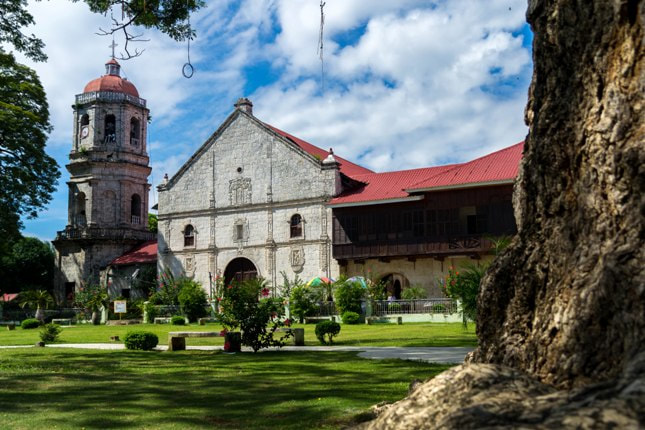Explore by Municipalities and Cities
Bahay Hilarion Alquizola | Hilarion Alquizola House
Bantayog Ng Santa Ana
Gusaling Gabaldon Ng Paaralang Sentral Ng Barili | Barili Central School Gabaldon Building
Hospisyo Ng San Jose Ng Barili | Hospicio De San Jose De Barili
Obelisk Ng Gorordo | Gorodo Obelisk
Parish Church Of Santa Ana Of Barili
Bahay Ni Don Jose Tio Bonpua, Sr. At Ang Museo Ng Banal Na Sining | Don Jose Tio Bonpua, Sr. House And The Museum Of The Sacred Art, Inc.
Balwarte Ng Bonbon | Bonbon Baluarte
Bantayan Sa Poblacion | Poblacion Baluarte (Watchtower)
Church Plaza
Cuartel Structure
Daanglungsod Baluartes (Watchtowers)
Daanglungsod Estaca - Kuta | Daanglungsod Estaca - Fortress
Daanglungsod Fortress
Immaculate Conception Parish Church
Looc Watchtower
Nueva Caceres Elementary School, H.E. Building
Oslob Cemetery Chapel
Oslob Cemetery Walls And Gates
Oslob Central Elementary School Including Admin Building, H.E. Building, And Acacia Trees
Oslob First Catholic Cemetery
Oslob Prayer Chapel
Pamanang Liwasang | Bayan Municipal Heritage Park
Parish Church Of The Nuestra Senora De La Inmaculada Concepcion Of Oslob
Pungtod Cemetery
Saint Joseph Shrine And Church Plaza
Saint Joseph The Carpenter Parish Church
Saint Mary's Academy Old Building
Simbahan Ng UCCP | UCCP Church
Waiting Chapel (Prayer Room)
Bantayog Ng Mga Pambansang Bayani | National Heroes Monument
Bantayog Ng Tres Alinos | Tres Alinos Monument
Kinalalagyan Ng Paaralan Ng Silangang Visayas | East Visayan Academy Grounds
Kolehiyo Ng Lungsod Ng Talisay | Talisay City College
Liwasan Ng Kalayaan At Bantayog Ng Pagdaong | Liberation Park And Landing Monument
Museo Ng Canton | Canton Museum
Parish Church Of Santa Teresa De Avila, Talisay, Cebu
Sementeryong Bayan Ng Poblacion | Poblacion Public Cemetery
Sementeryong Bayan Ng San Jose Manggagawa | Saint Joseph The Worker Public Cemetery
San Guillermo de Aquitania Church (Parish Church of San Guillermo de Aquitania of Dalaguete)

Saint_William_of_Aquitaine_Church_in_Dalaguete%2C_Cebu.jpg | https://en.wikipedia.org/wiki/Dalaguete

beyondcebu.com

https://steemit.com/philippines/@jayparagat/san-guillermo-de-aquitania-church-in-architectural-photography-2cdaacc6e0dd7

cebudailynews.inquirer.net

San Guillermo de Aquitania, in Dalaguete, Cebu | by http://historicsitesinthephilippines.blogspot.com/2015/04/historic-sites-san-guillermo-de.html

cebudailynews.inquirer.net
Official Name: Parish Church of San Guillermo de Aquitania of Dalaguete[1]
Classification Status: National Historical Landmark[1]
Town or City: Dalaguete
Year Declared: 2004[1]
Description:
The construction of the present church began in 1802 under the direction of Father Juan Chacel. A bell cast in 1805 was probably hung in a temporary bell tower. Although Father Chacel was assigned elsewhere for two years, he returned to Dalaguete in 1818 and continued working on the church. The church was completed in July 1825, three months before Father Chacel died.
The convento was built from 1832 to 1842. The belfry was constructed from 1854 to 1860. In 1860 the altar was finished with marble and the floor with tiles. Structural repairs were undertaken starting in 1868. In 1905 a silver frontal was installed at the main altar. In 1931 the roof tiles were replaced with galvanized iron sheets. In 1935, Canuto Avila of the San Nicolas district of Cebu City was commissioned to decorate the ceiling with paintings while Father Ruperto Sarmiento was parish priest. Avila, assisted by his sons, worked on the painting for six months, from 1 July to 16 December 1935.
The church is 60 meters long, 18 meters wide and 11 meters high. The belfry is 9 meters wide and about 13 meters high. A one-story building connects the belfry to the church.
The facade is divided by cornices into three horizontal sections, and by thin pilasters into three vertical sections. At the apex and ends of the raking cornice are finials. The pediment is a triangle with truncated side corners. At the central section, resting on the cornice, is a decorated niche over which floats a small round window. The walls of the side sections of the pediment are unadorned. The central section of the second level of the facade has a small niche, resting on the lower cornice. On both side sections are relatively large arched windows that rest on the lower cornice. The central section of the first level of the facade is almost wholly occupied by the arched portal, which nearly touches the cornice above it. On the side sections of the first level are niches that appear to hang from the cornice above them.
The three-story bell tower is octagonal, with arched openings and a domed roof surrounded by a balustrade. Like the bell tower of Argao, it has a mechanical clock. It has at present 10 bells, all functioning. The treasures of the Dalaguete Church include the painted decorations on the ceiling and the finely carved rococo ornaments of the principal and side retablos.
Dalaguete Church was designated a National Historical Landmark through the National Historical Institute Resolution No. 3, 2004.
This article is from the CCP Encyclopedia of Philippine Art Digital Edition.
Title: Dalaguete Church
Author/s: Resil B. Mojares (1994) Updated by René B. Javellana (2018)
URL: https://epa.culturalcenter.gov.ph/2/8/291/
Publication Date: November 18, 2020
Access Date: September 20, 2023
Copyright © 2020 by Cultural Center of the Philippines
All rights reserved. Cultural Center of the Philippines (CCP) is the sole and exclusive distributor of the Encyclopedia of Philippine Art (EPA) Digital Edition. No part of this publication may be reproduced, distributed, or transmitted in any form or by any means, including recording, or other electronic or mechanical methods, without the prior written permission of the CCP, except in the case of brief quotations embodied in critical reviews and certain other noncommercial uses permitted by the copyright law, provided that in-text citations and proper acknowledgement must be used. For permission requests, write to the ipr@culturalcenter.gov.ph, addressed “Attention: EPA Digital Edition content permission”.
Source:
1. https://ncca.gov.ph/philippine-registry-cultural-property-precup/
2. https://epa.culturalcenter.gov.ph/2/8/291/





